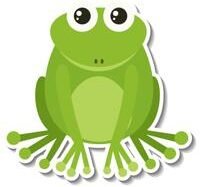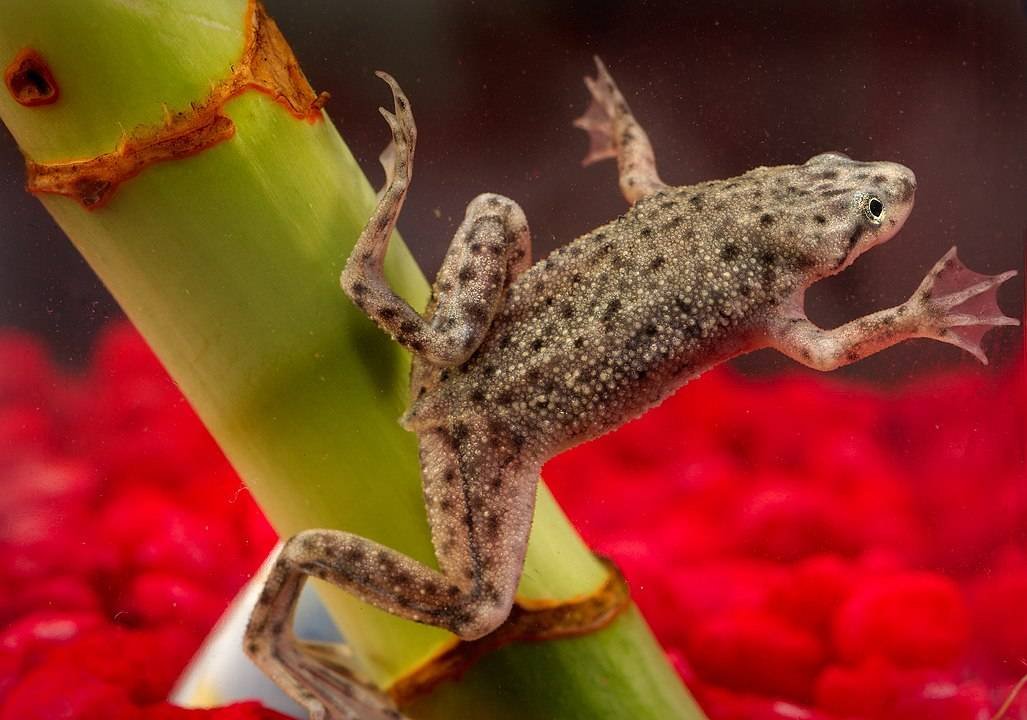The African Dwarf Frog, also known by its scientific name Hymenochirus, is a small yet fascinating amphibian. These fully aquatic frogs are popular pets due to their peaceful nature, small size, and easy care requirements. Native to the waters of Central Africa, African Dwarf Frogs are well-adapted to aquatic life, spending their entire lives in water. This guide covers everything you need to know about their care, habitat, behavior, and feeding, making it easier to provide a healthy and enriching environment for these unique creatures.
Table of Contents
- 🐸 Key Features of the African Dwarf Frog
- 🌊 Habitat and Aquarium Setup
- 🍽️ Feeding the African Dwarf Frog
- 🐠 Behavior and Compatibility
- 🌍 Conservation and Protection
- ❓ Frequently Asked Questions
- 📚 Sources
Key Features of the African Dwarf Frog 🐸
The African Dwarf Frog is one of the smallest aquatic frogs, growing to only 1.2 to 1.6 inches (3-4 cm) in length. It has a soft, smooth, and typically olive-green body, speckled with darker spots for camouflage in the wild.
- Size: These frogs are small and compact, with females being slightly larger than males.
- Limbs: Fully webbed back legs make them powerful swimmers, while smaller, clawed front legs help with feeding and movement.
- Breathing: Despite being aquatic, they breathe air through their lungs. They must surface regularly to take a breath, often floating to the surface or swimming up for air.
Their gentle nature and ease of care make them perfect for aquarium settings, but they do need specific conditions to thrive.
Habitat and Aquarium Setup 🌊
To ensure your African Dwarf Frog is comfortable, it’s essential to create a proper habitat that mimics their natural environment:
- Tank Size: A minimum of a 10-gallon (40 liters) tank is necessary for one frog. For multiple frogs, consider a 15-gallon (60 liters) tank.
- Substrate: Use fine gravel or soft sand to avoid injuring their sensitive skin. Avoid sharp rocks or coarse substrates.
- Plants and Decorations: Provide plenty of live plants, such as Java moss or water ferns, as well as hiding spots like driftwood or caves. These frogs appreciate having areas to hide and explore.
- Water Temperature: Maintain a water temperature between 72-79°F (22-26°C), and ensure there are no sudden temperature changes.
- Water Movement: Mild water flow is ideal. Strong currents can stress them out, so avoid high-powered filters that create turbulence.
- Water Quality: A filtration system is essential for keeping the water clean. Regular water changes (20-30% each week) are necessary to keep ammonia and nitrate levels low.
Feeding the African Dwarf Frog 🍽️
Proper feeding is crucial for the health and longevity of the African Dwarf Frog. Here’s a list of food options to keep your frog healthy and satisfied:
- Commercial Frog Pellets: Specially formulated pellets are great for meeting the nutritional needs of aquatic frogs.
- Frozen or Live Bloodworms: These are a popular and nutritious choice that frogs love.
- Tubifex Worms and Grindal Worms: High-protein worms that provide essential nutrients.
- Brine Shrimp: A great protein-rich treat for variety in their diet.
Feed your frog small amounts two to three times a day, but be sure to avoid overfeeding, as excess food can pollute the water.
Behavior and Compatibility 🐠
- Social Nature: African Dwarf Frogs are social animals that enjoy the company of their own kind. They thrive in small groups, and it’s a good idea to keep at least two frogs together.
- Peaceful: They are non-aggressive and get along well with other small, peaceful fish. Avoid keeping them with larger, aggressive species.
- Activity: These frogs are mainly nocturnal, becoming more active at night. During the day, they spend time resting among plants or hiding in crevices.
Conservation and Protection 🌍
- Conservation Status: The African Dwarf Frog is not considered endangered. However, its natural habitat in Central Africa faces threats from pollution and habitat destruction.
- Wild-Caught vs. Tank-Bred Frogs: Always opt for tank-bred frogs to avoid contributing to the depletion of wild populations. Tank-bred frogs are healthier and easier to acclimate to aquarium life.
Frequently Asked Questions ❓
Can African Dwarf Frogs live with fish?
- Yes, they can coexist with small, non-aggressive fish like neon tetras, guppies, and shrimp. However, they should be kept away from larger predatory fish that may view them as food.
How often should I feed them?
- Feed your frogs small amounts of food once or twice a day. Be careful not to overfeed, as this can affect water quality.
How long do African Dwarf Frogs live?
- With proper care, these frogs can live for up to 5-7 years in captivity.
Related Articles
- The Life Cycle of Frogs: From Egg to Adult
- Exploring the Diversity of Frog Species
- Tropical Frog Species: Living Treasures of the Rainforest
- Black Rain Frog: The Enigmatic Amphibian of Mossy Landscapes
- Frog Evolution: From Ancient Origins to Today’s Amphibians

